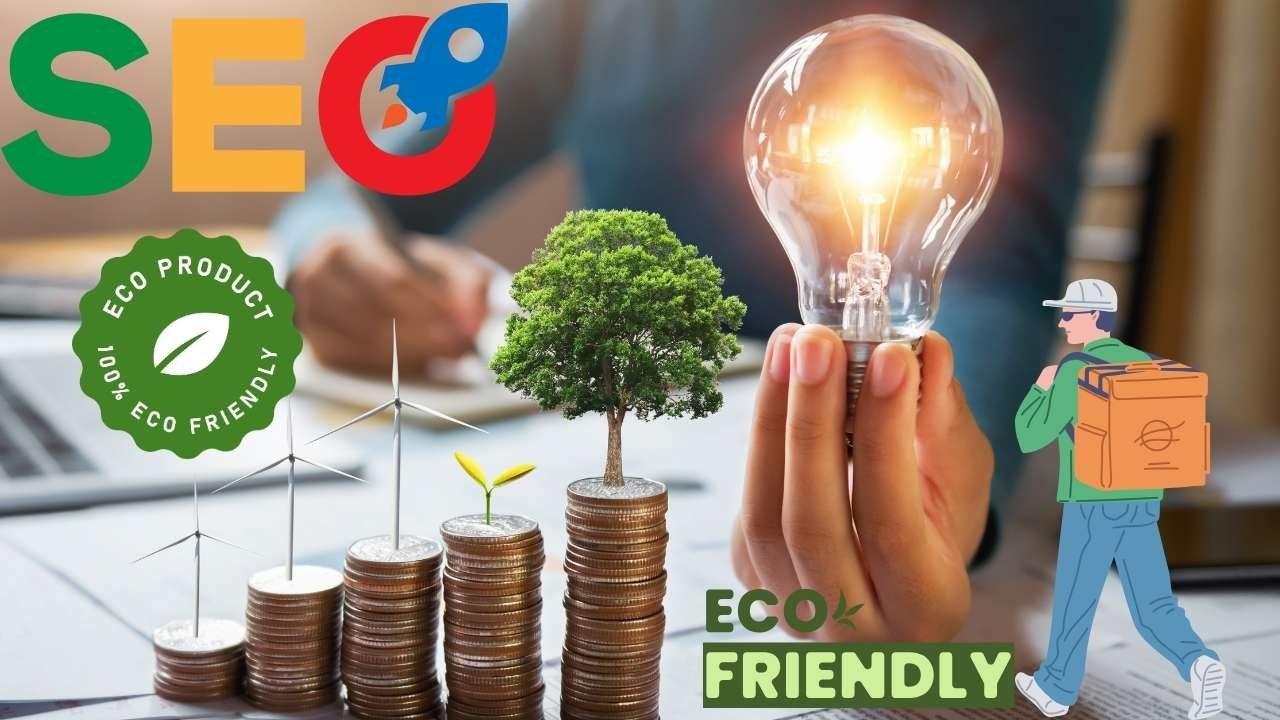Discover why fast-loading, lightweight, and eco-friendly WordPress themes are essential for SEO and sustainability in 2025. Learn how speed optimization, clean code, and green hosting boost your rankings and reduce your site’s carbon footprint.
Introduction
In today’s digital landscape, speed isn’t just a luxury — it’s a necessity. A slow website can destroy your search rankings, frustrate users, and even harm the planet. With over 40% of visitors leaving a page that takes more than 3 seconds to load, optimizing performance has never been more critical.
That’s where eco-friendly and lightweight WordPress themes come in. These themes combine sustainability, performance, and SEO — making them the gold standard for modern web design in 2025.
Let’s explore why theme speed matters, how it affects SEO, and the practical steps you can take to build greener, faster WordPress sites.
1. Why Website Speed Is Crucial for SEO
Website speed has been a core Google ranking factor since 2018. In 2025, it plays an even bigger role thanks to Core Web Vitals — metrics that measure how quickly a page loads and how users experience it.
Key Speed Metrics that Impact SEO
Metric | Description | Ideal Value |
LCP (Largest Contentful Paint) | Measures the loading time of the main content | ≤ 2.5 seconds |
FID (First Input Delay) | Measures interactivity delay | ≤ 100 ms |
CLS (Cumulative Layout Shift) | Measures visual stability | ≤ 0.1 |
A lightweight theme helps you pass these metrics effortlessly by reducing
- Render-blocking CSS/JS
- Unused code
- Heavy images and fonts
In short, faster websites = better user experience = higher rankings.
2. What Makes a Theme “Eco-Friendly”?
An eco-friendly WordPress theme focuses on reducing digital carbon emissions. Every time a page loads, servers consume electricity. The heavier the site (in MB), the more energy it uses.
A lightweight 500KB page consumes up to 70% less energy than a 4MB bloated site. That directly contributes to a lower carbon footprint — and happier users.
Characteristics of Eco-Friendly Themes
- Minimal file requests (CSS, JS)
- Optimized, compressed assets
- Built-in lazy loading
- Clean, modular code
- Compatibility with green hosting providers
By minimizing server requests and file sizes, you save both energy and bandwidth — leading to faster performance and environmental benefits.
3. Lightweight Themes: The Backbone of Performance
A lightweight WordPress theme uses optimized HTML, CSS, and JavaScript to ensure blazing-fast performance.
Example
A typical bloated multipurpose theme loads 3–5 MB on the homepage, while a lightweight theme like Kaddora Multipurpose or Astra may load under 800 KB.
Benefits of Lightweight Themes
-
Faster Loading Improves SEO and user retention.
-
Better Mobile Experience Crucial for Google’s mobile-first indexing.
-
Lower Bounce Rate Visitors stay longer when pages load instantly.
-
Energy Efficiency Less data transfer means less CO₂.
-
Easier Maintenance Clean structure and fewer dependencies.
4. The SEO Science Behind Speed
Google rewards websites that offer a smooth user experience. Page speed is directly tied to
-
Crawl Efficiency Fast sites are crawled more frequently.
-
Reduced Bounce Rates Visitors don’t leave slow pages.
-
Higher Engagement Quick interactions improve session time.
-
Improved Conversion Rates Every 1-second delay can reduce conversions by 7%.
Example
If your store loads in 2 seconds instead of 5, you can see up to 30–40% higher conversions — a direct SEO and business win.
5. Key Elements of a High-Performance WordPress Theme
A truly optimized theme doesn’t just “look” fast — it’s engineered for speed from the ground up.
Essential Components
Element | Description |
theme.json | Centralized control over typography, spacing, and colors |
No jQuery dependency | Uses vanilla JavaScript for faster loading |
System fonts | Avoids extra font downloads |
Optimized block styles | Loads only active block CSS |
Modular architecture | Enables only the code that’s needed |
Themes like Kaddora Organic Block Theme and Blocksy are built with such principles — offering fast, modern, eco-conscious design.
6. The Environmental Impact of Web Design
The internet produces over 1 billion tons of CO₂ per year — nearly the same as the aviation industry.
Every image, script, and animation contributes to this energy use.
By using eco-friendly WordPress themes, you reduce
- Server power consumption
- Data center load
- Client-side rendering time
You can even estimate your site’s environmental impact using tools like
- Website Carbon Calculator
- Ecograder
7. How to Make Your WordPress Theme Eco-Friendly
If you’re developing your own theme (like your Kaddora suite), here’s how to ensure it’s lightweight and green.
Developer Checklist
-
Use theme.json for global styling Avoid inline CSS and excessive selectors.
-
Defer or async JavaScript.t Reduces render-blocking scripts.
-
Minify and compress assets Use wp_enqueue_style() wisely — load only what’s needed.
-
Lazy-load images and videos Enable by default using the native loading="lazy" attribute.
-
Integrate webP images Reduce image weight by up to 80%.
-
Use clean markup Remove unused divs, inline styles, or shortcodes.
-
Avoid large page builders Prefer native Gutenberg blocks or patterns for performance.
-
Enable caching CDN Works best with lightweight themes for maximum speed.
8. Tools to Measure Theme Speed and Efficiency
Before publishing your theme, always benchmark performance.
Recommended Tools
Tool | Use |
Google PageSpeed Insights | Measures Core Web Vitals |
GTmetrix | Checks waterfall loading & requests |
Pingdom Tools | Monitors global loading speed |
WebPageTest.org | Provides detailed performance data |
Carbon Calculator | Estimates the environmental footprint |
Aim for
- Load Time < 2.5 seconds
- Page Size < 1 MB
- Requests < 50
9. Popular Lightweight & Eco-Friendly Themes (2025)
Here are a few standout themes following sustainability + performance trends
Theme | Avg Page Size | Key Features |
Kaddora Organic Block Theme | ~700KB | FSE, WooCommerce, lightweight global styles |
Astra | ~800KB | Minimal framework, schema-ready |
Neve | ~850KB | AMP compatible, fast starter sites |
GeneratePress | ~700KB | Clean code, flexible layout |
Blocksy | ~900KB | FSE-ready, advanced customizer |
These themes are not only SEO-friendly but also designed for eco-conscious performance.
10. Real SEO Benefits of Eco-Friendly Themes
When your site loads quickly and efficiently, search engines love it — and users reward you too.
Direct SEO Gains
-
Higher Rankings Google’s algorithm prioritizes fast, efficient websites.
-
Lower Bounce Rate Visitors stay longer and view more pages.
-
Improved Accessibility Lightweight code improves usability.
-
Better Conversion Rates Faster checkout = happier customers.
-
Enhanced Brand Image “Eco-friendly website” signals responsibility and trust.
By merging performance + sustainability, your WordPress theme becomes future-proof, both technically and ethically.
11. The Future of Sustainable Web Development
By 2025 and beyond, expect to see
-
AI-powered theme optimization (automatic code cleanup)
-
Green hosting integration badges (eco-site verification)
-
Dynamic performance scoring in WP Admin dashboards
-
Zero-emission data centers powering WordPress hosting
Developers and brands that prioritize sustainability and performance will dominate SERPs and user trust alike.
Conclusion
Fast websites don’t just rank better — they consume less energy, improve conversions, and support sustainability.
Choosing or developing a lightweight, eco-friendly WordPress theme is your gateway to a greener, faster, and more SEO-optimized web presence.
In 2025, the web’s future belongs to those who build smart, code clean, and load fast.
So whether you’re launching a WooCommerce store, portfolio, or blog — make it light, fast, and eco-friendly.
Top 10 FAQs About Eco-Friendly & Lightweight WordPress Themes
-
What makes a WordPress theme lightweight? A lightweight theme has minimal CSS/JS, clean code, and avoids unnecessary dependencies that slow down page speed.
-
How does theme speed affect SEO? Page speed impacts Google’s Core Web Vitals, which influence rankings, engagement, and conversions.
-
Can a theme really be eco-friendly? Yes. By reducing page weight and server requests, eco-friendly themes minimize energy use and CO₂ emissions.
-
Are multipurpose themes bad for performance? Not always — but many include unused scripts. Choose modular designs that load only what’s required.
-
How can I test if my theme is eco-friendly? Use tools like Website Carbon Calculator or Ecograder to measure your website’s carbon footprint.
-
What’s better — a custom theme or a prebuilt lightweight theme? If performance and flexibility matter, a custom FSE block theme built from scratch is best.
-
Do lightweight themes support WooCommerce? Yes, most modern themes like Kaddora Organic or GeneratePress fully support WooCommerce with optimized templates.
-
How can I make my existing theme eco-friendly? Minify code, lazy-load media, remove unused plugins, and optimize assets using caching or CDN.
-
Does using a green hosting provider improve SEO? Indirectly, Google favors efficient performance and uptime, which green hosting often provides.
-
What are the best lightweight themes for 2025? Kaddora Multipurpose, Astra, Neve, and Blocksy remain top performers for speed, SEO, and sustainability.

Monetising WordPress Themes & Plugins: Licence Models, Free-vs-Pro Strategy & Affiliate Marketing
Read More »
Theme Security Best Practices: Protecting Your Users and Building a Trusted Brand (2025 Edition)
Read More »





Leave a Reply